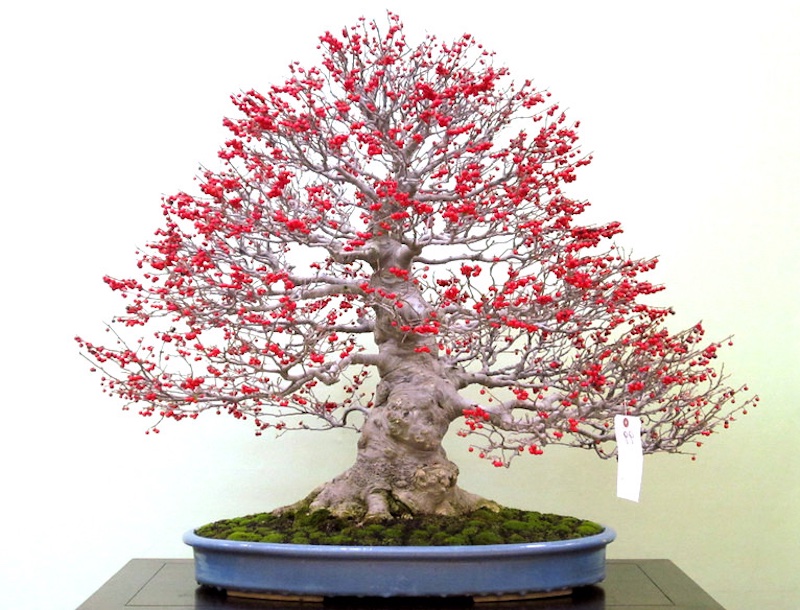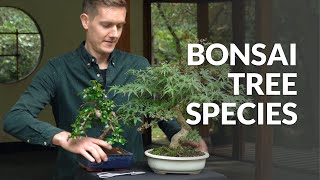Japanese winterberry Bonsai Care guidelines
The Japanese Winterberry is an outdoor plant and should be placed outside all year round. The male and female trees must be placed very near to each other to make sure they have the same growing conditions, especially in spring, so that both genders will flower at the same time. The Winterberry needs a lot of sunlight for producing its fruit, but should be protected from intense heat and sun during the hottest summer days. Birds like the berries and steal them as soon they begin to turn red. So you have to protect the trees, maybe in some kind of birdcage, if you want to enjoy the beautiful sight of the red fruits on bare twigs in autumn and winter. The Japanese Winterberry tolerates frost but should be protected from very low temperatures when it is planted in a bonsai pot.
Don't let the Winterberry dry out completely. Water it thoroughly as soon as the soil surface gets dry. Continue reading about watering Bonsai trees.
Watering
Free lecture from the Beginners CourseUse a balanced liquid fertilizer once a week during the growing season. You can also apply solid organic fertilizer.
New shoots are cut back leaving two leaves after four leaves have developed. Do not defoliate the Japanese Winterberry completely because it needs the leaves for producing energy for the fruit. Wiring is best done from autumn to spring because the leaves come off at a light touch when you try to wire twigs with foliage. Continue reading about pruning Bonsai trees.
Repot every second year in spring with root-pruning. A suitable soil mix is Akadama, pumice and a little humus. Continue reading about repotting Bonsai trees.
The Japanese Winterberry can be propagated from seeds and cuttings.
In spring aphids sometimes attack the Japanese Winterberry. They are easy to control with specific insecticides. For more detailed information on these techniques, check out our Bonsai tree care section.

Japanese Winterberry (Ilex serrata bonsai), photo by Jonas Dupuich and William Valavanis.
General information about the Ilex serrata Bonsai tree
The Japanese Winterberry belongs to the Ilex (holly) genus and the Aquifoliaceae family. It is a deciduous shrub or small tree and can become 4 m (13ft) high. It is native to Japan where it is a hardy species with dark green serrated leaves and tiny light pink flowers. The female trees bear beautiful red berries which last until next spring if they are not stolen by birds. It is necessary to have a male and a female tree flowering at the same time to ensure pollination, otherwise there will be no fruits. The Japanese Winterberry is especially popular for shohin size bonsai, but there are also larger Ilex bonsai trees. If you need help identifying your tree, take a look at our Bonsai tree identification guide.





